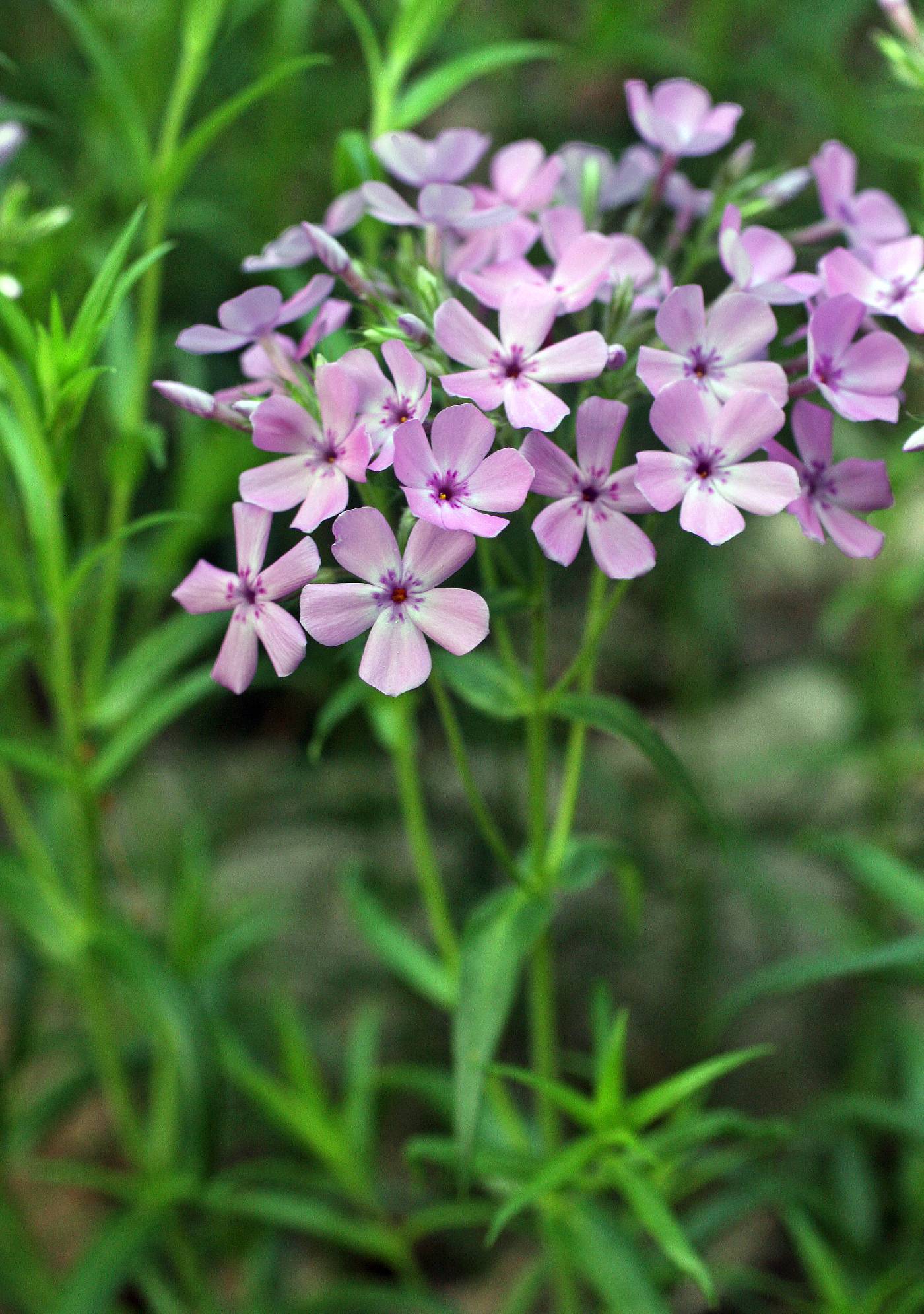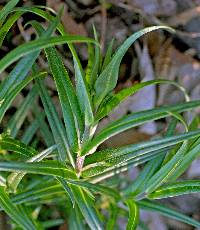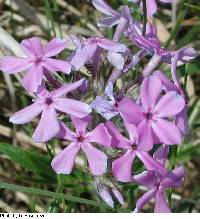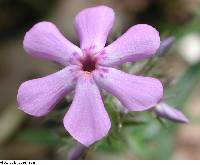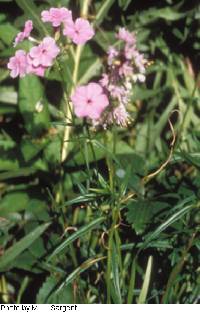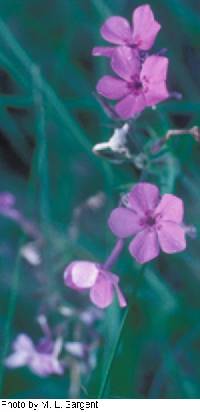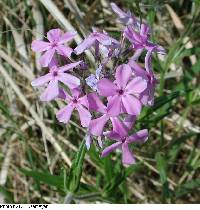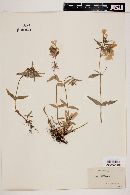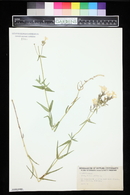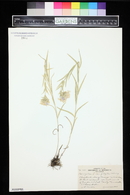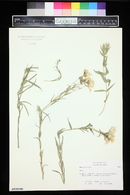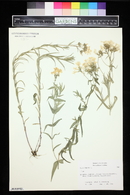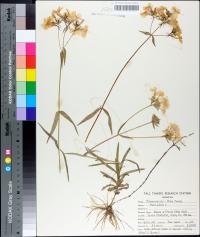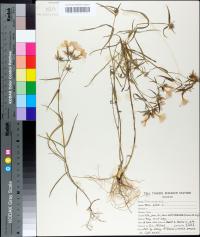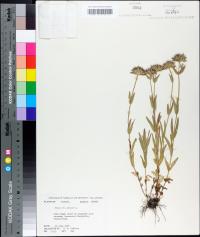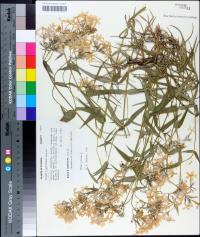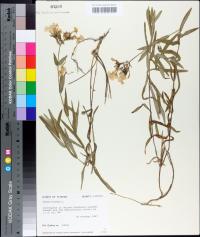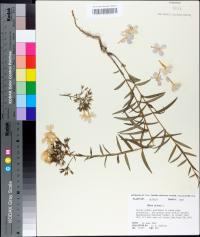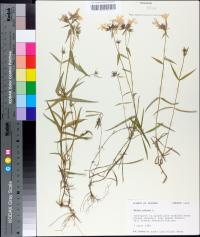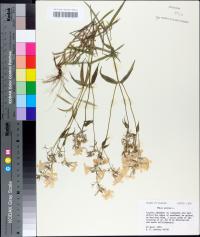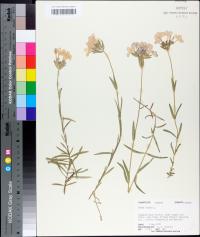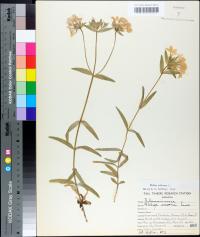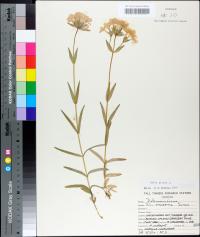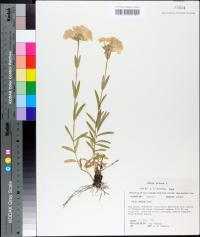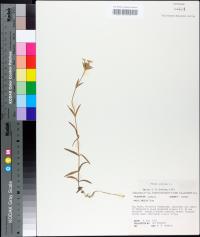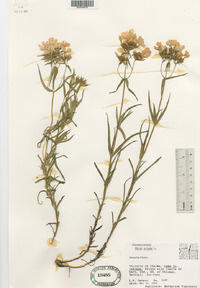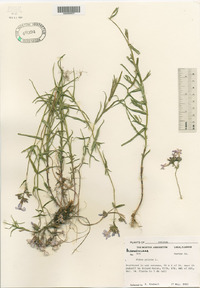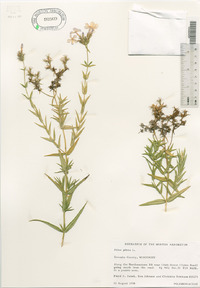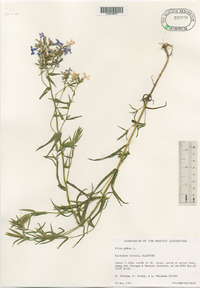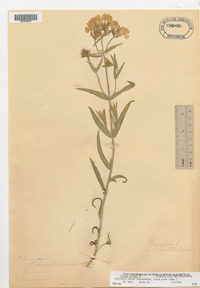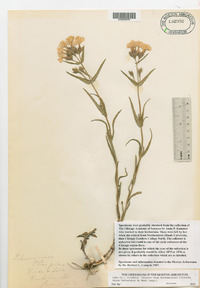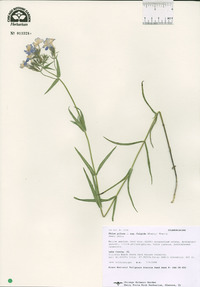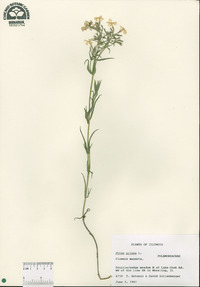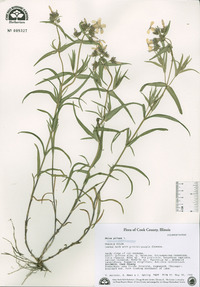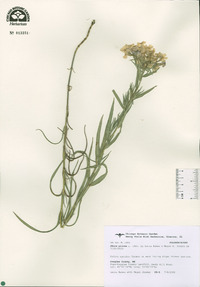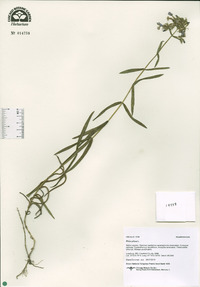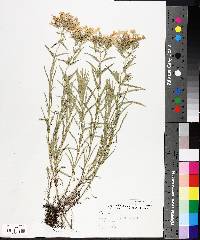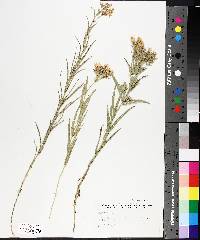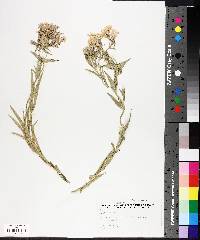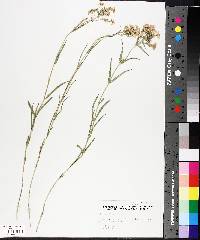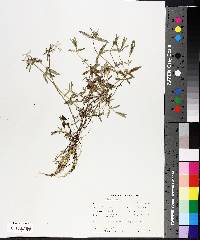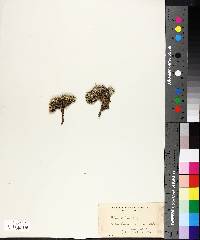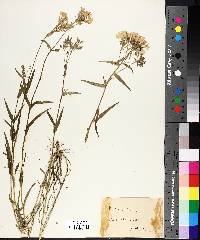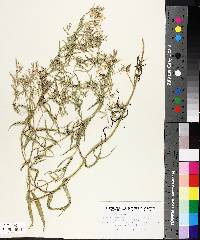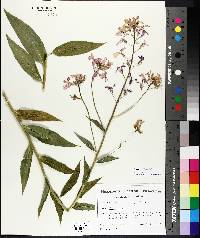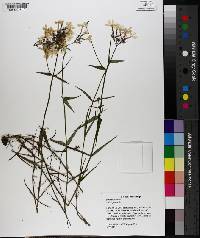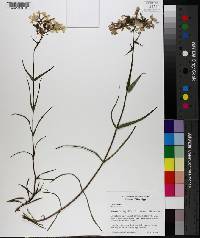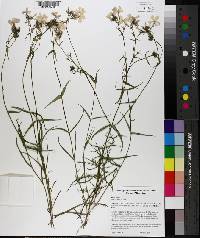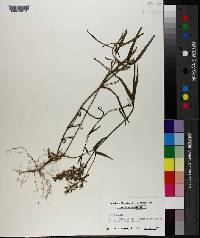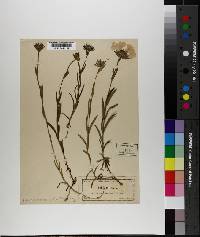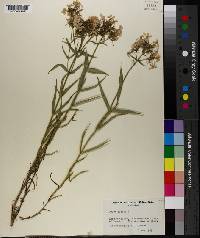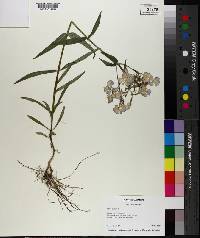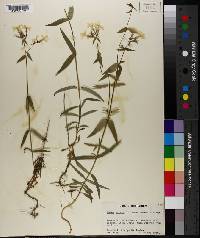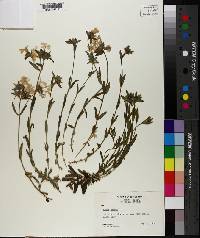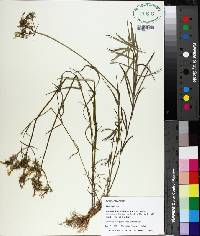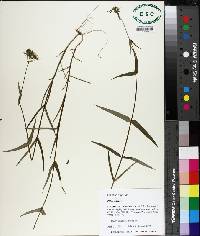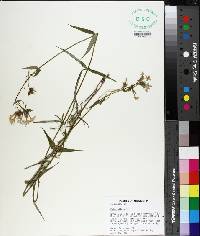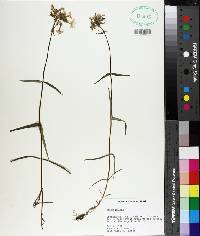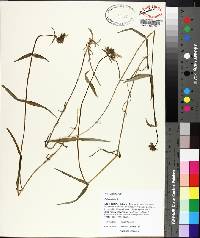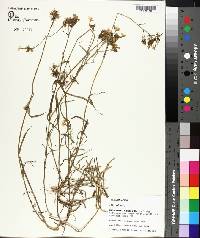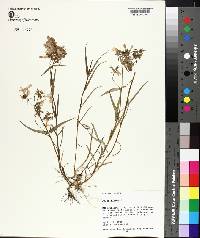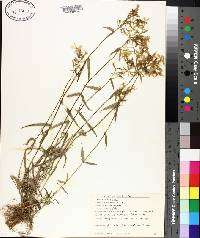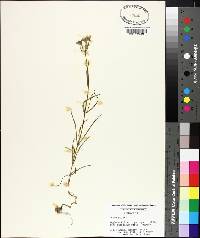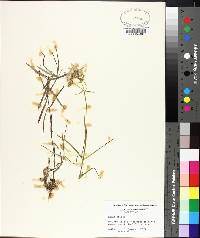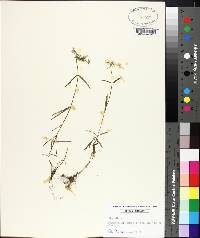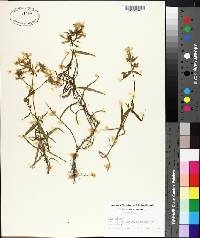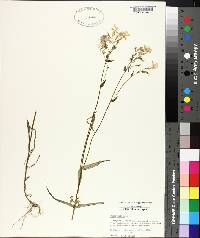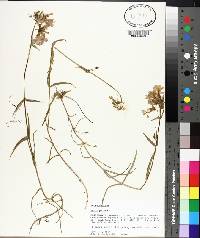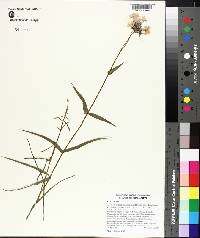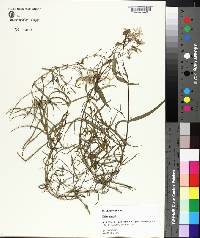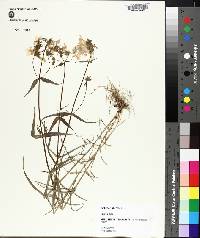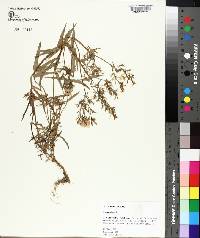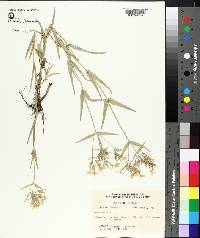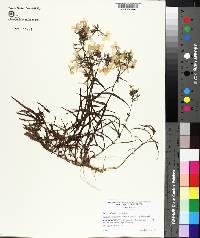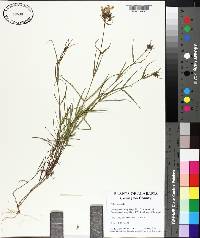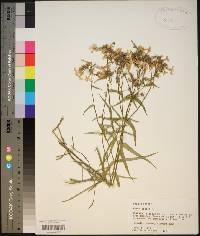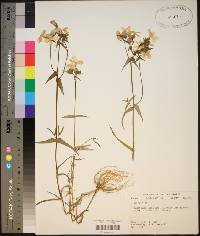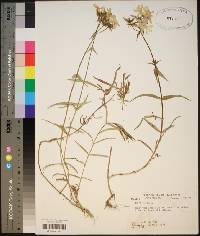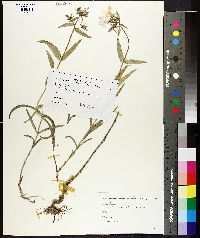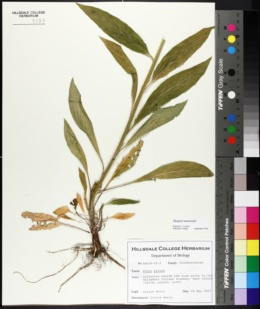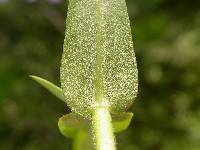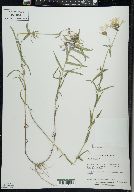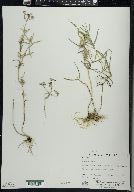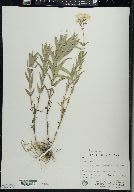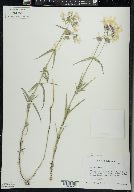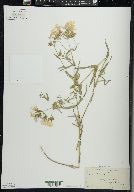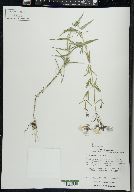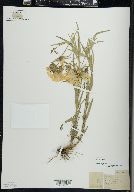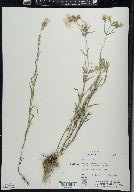Phlox pilosa
|
|
|
|
Family: Polemoniaceae
Downy Phlox
|
Perennial herb 25 - 60 cm tall Leaves: opposite, stalkless, longer than wide, and abruptly or gradually narrowed to a sharp, stiff point. The lower leaves are linear, while the upper leaves are larger, lance-shaped, and over six times longer than wide. Leaf hairiness varies according to position on the stem, as well as between subspecies. Inflorescence: terminal, loose and open branched, usually covered with fine, sometimes gland-tipped hairs (depending on subspecies), and having twelve to fifty flowers with bracts scattered throughout. The two lowest branches of the inflorescence are at least 1 cm long. Flowers: short-stalked, pink or purple, 1.5 - 2 cm wide, radially symmetric, with a slender tube, and abruptly flared lobes. The fragrance of the flower varies depending on the subspecies. Sepals: five, 0.8 - 1.2 cm long overall, but fused for up to half their length, then separating into lobes with at least 0.5 mm long, stiff, bristle tips. Petals: five, but fused into a 1 cm long, hairy tube, then separating into inversely egg-shaped lobes with rounded or abruptly short-pointed tips. Stamens: five, with filaments attached at different heights along the inside of the petal tube, but never extending beyond the petal tube. Pistil: with a single, three-chambered, superior ovary; and three, short (1.5 - 4 mm long, usually shorter than stigmas or ovary), fused styles, which separate above the middle into three, linear stigmas. Fruit: a three-valved, three-chambered, egg-shaped capsule with one (rarely two), relatively large (up to 6 mm long), ellipsoid seed per chamber. Stems: slender, with horizontal, non-rooting, non-leafy shoots, and normally a single, erect, fertile shoot (with leaves and flowers), which is unbranched below the inflorescence, and covered with long, soft, non-glandular hairs. Similar species: Phlox pilosa is similar to P. divaricata, but that species does not have sharp, stiff leaf tips; it usually has hairless petal tubes; and the sepals do not have such long, pointed tips. There are five subspecies of P. pilosa in eastern North America, and each can be distinguished by the hairs of the inflorescence. Two of the subspecies occur in the Chicago Region: P. pilosa ssp. pilosa, which has evidently glandular hairs in the inflorescence; and P. pilosa ssp. fulgida; which has multicelled, non-glandular, long, silky hairs. Other species of Phlox in the Chicago Region are either low, decumbent plants, or else the style is very long, and greatly exceeds the length of the stigmas or ovary. Flowering: May to August Habitat and ecology: Very characteristic of sandy black oak savannas and prairies. Occurence in the Chicago region: native Etymology: Phlox is the Greek word for flame. Pilosa means covered in soft, long hairs. Author: The Field Museum Erect, 3-6 dm, the sterile basal shoots also erect or ascending; lvs linear to lanceolate or lance-ovate, 3-8 cm, narrowed to a sharp, indurate tip; infl a loosely branched cyme, the branches conspicuously stalked, the fls all or mostly on distinct pedicels; cor commonly pale red-purple, 1.5-2 cm wide, the tube usually ±hairy; style short; 2n=14. Prairies and upland woods; Conn. to Fla., w. to Man., Nebr., and Tex. Apr.-June. The widespread var. pilosa, which however extends nw. only to s. Wis. and e. Io., is evidently glandular-hairy in the infl (var. virens). Var. fulgida Wherry, a nw. phase (Wis. and Ill. to Man. and Kans.), is eglandular, with the hairs of the cal very fine and lustrous, 0.5 mm. Var. amplexicaulis (Raf.) Wherry, chiefly of Tex. to La. and Ark., but extending n. to n. Mo. and s. Ind., is likewise eglandular, but the hairs of the cal are coarse and 1-1.5 mm. (P. pulcherrima) An extensive but local population along the Sangamon R. in c. Ill. differs from var. pilosa in its glabrous cor-tube and has been described as ssp. sangamonensis D. A. Levin & D. M. Sm., but plants with glabrous cor-tube also occur elsewhere in the range of var. pilosa. Plants thought to form a stabilized derivative of P. amoena נpilosa, found in sw. Ind., w. Ky., and nw. Tenn., have been named P. pilosa ssp. deamii D. A. Levin. These plants approach P. amoena in aspect, but have the pubescent cor-tube of P. pilosa. Other vars. occur southward. Gleason, Henry A. & Cronquist, Arthur J. 1991. Manual of vascular plants of northeastern United States and adjacent Canada. lxxv + 910 pp. ©The New York Botanical Garden. All rights reserved. Used by permission. |
|
|
|

